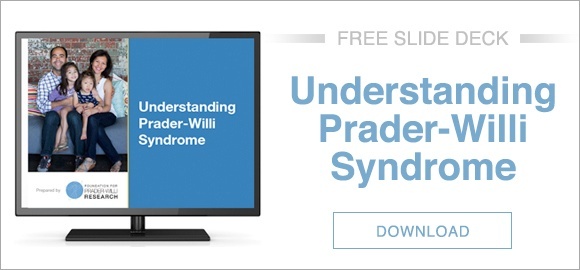 A series of recent discoveries have defined a new pathway for regulating appetite and satiety suggesting that a naturally occurring protein in our bodies could have the potential to be a safe and effective therapy for obesity. This protein, known as growth differentiation factor 15 or GDF15 (or MIC1), is mostly made in the liver but also in other tissues. It normally circulates in the blood and functions in many cellular processes such as inflammation, response to stress, energy expenditure etc. However, its levels can increase in several disease states including cardiovascular disease, liver disease, diabetes, dementia and especially advanced cancer.
A series of recent discoveries have defined a new pathway for regulating appetite and satiety suggesting that a naturally occurring protein in our bodies could have the potential to be a safe and effective therapy for obesity. This protein, known as growth differentiation factor 15 or GDF15 (or MIC1), is mostly made in the liver but also in other tissues. It normally circulates in the blood and functions in many cellular processes such as inflammation, response to stress, energy expenditure etc. However, its levels can increase in several disease states including cardiovascular disease, liver disease, diabetes, dementia and especially advanced cancer.
Scientists studying GDF15 in the context of cancer discovered that when mice were implanted with tumors that made a large amount of GDF15, they developed cachexia, a type of extreme weight and muscle loss. In subsequent experiments, they showed that the cachexia was mainly due to reduced food intake and could be reversed by neutralizing GDF15 with antibodies. This was an interesting finding because cachexia and loss of appetite are also commonly seen in several advanced human diseases along with an increase in blood levels of GDF15.
GDF15 As A Regulator Of Appetite And Weight
Although the association of GDF15 with weight loss and appetite reduction was discovered as an undesirable consequence of advanced cancers, it led scientists to question whether GDF15 may play a role in the general regulation of appetite and energy in our bodies.
They created mice that overproduced GDF15 and found that these mice had decreased body weight and fat mass, improved glucose tolerance, and a longer lifespan. On the other hand, mice lacking GDF15 had a higher fat mass and body weight when fed a regular diet, which could be reversed by GDF15 injections.
Further investigation revealed that GDF15 acts in the brain; direct injection of GDF15 into the ventricles of mouse brains led to decreased food intake. This occurred partly through the hypothalamus via known pathways, however, a much larger effect of GDF15 injections was seen in parts of the hindbrain. Some regions of the hindbrain where GDF15 acts are outside of the blood brain barrier, meaning that potential therapies could make their way into these regions easily via the bloodstream.
GDF15 As A Therapy For Obesity / Hyperphagia
Although these exciting discoveries suggested that GDF15 would be a powerful target for therapeutic interventions, the lack of knowledge regarding GDF15 signaling in the hindbrain prevented the development of therapies for several years. Then, in a flurry of activity last year, several independent publications from major pharma companies identified a protein called GFRAL as the receptor for GDF15 action (read more about these publications here, here, here, and here). They found that GFRAL is produced specifically in the hindbrain regions that were previously identified as being important for the appetite reducing effects of GDF15. Moreover, GDF15 injections failed to have any effect on food intake and weight loss in mice lacking GFRAL.
Researchers also generated and tested long-acting versions of GDF15 in mice and monkeys. Remarkably, the animals lost between 10-24% of their body weight over 5-6 weeks despite being on a high fat diet. Not only did they lose weight but treated mice in this study also ate less food and preferred food that had a lower fat content.
An Interesting Pathway For PWS?
The discovery that GDF15 mediates weight loss primarily through appetite reduction suggests that this pathway might have relevance for the treatment for hyperphagia and obesity in PWS.
One of the hindbrain regions where GDF15 acts-the area postrema (AP), controls satiety and lies outside the blood-brain barrier making it easier to develop drugs targeting this region. This region is also the “vomit-triggering” center of the brain, therefore drugs targeting this area may have the unwanted side-effects of nausea and/or vomiting. Given that vomiting is a rare occurrence in PWS, this may be less of a concern for this population, but further research will be needed to clarify if drugs targeting this pathway will be well tolerated in humans.
Hindbrain regions are connected to the gut via vagus nerves and regulate gut motility. Scientists found that mice treated with long-acting GDF15 had slower gastric emptying, and that GDF15 probably acts through a vagus-nerve dependent mechanism. It is not currently known if this is also true in humans, but because slow gastric emptying is a known problem in PWS this needs to be kept in mind for future drug development.
The fact that GDF15 selectively binds GFRAL without any apparent “off-target” effects is also worth noting. Animal studies so far have not reported any major side-effects of GDF15 treatment. As always, we will need human trials to learn more about the potential efficacy in decreasing appetite, as well as determine if there are any undesirable side effects. Given the level of interest from pharmaceutical companies, studies of this pathway are likely to continue to move relatively quickly.








